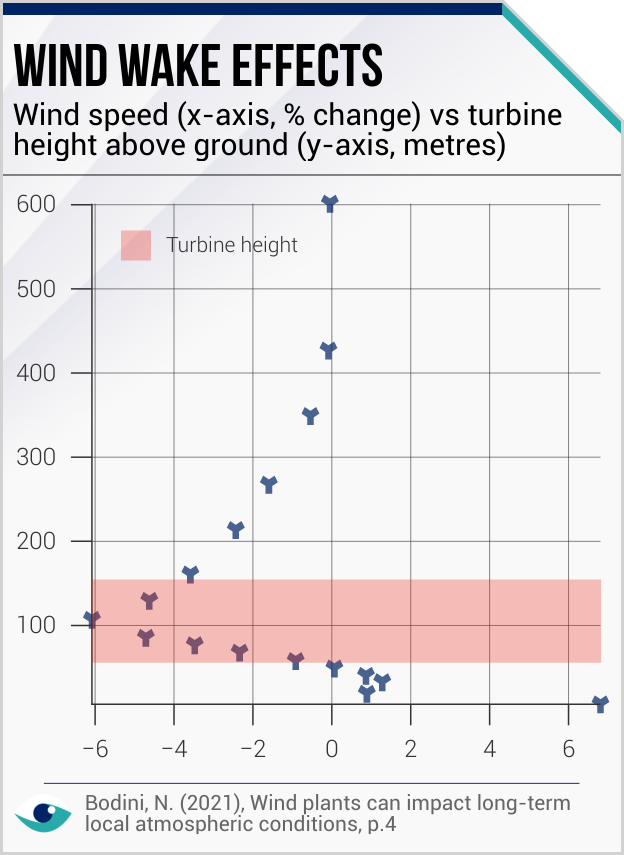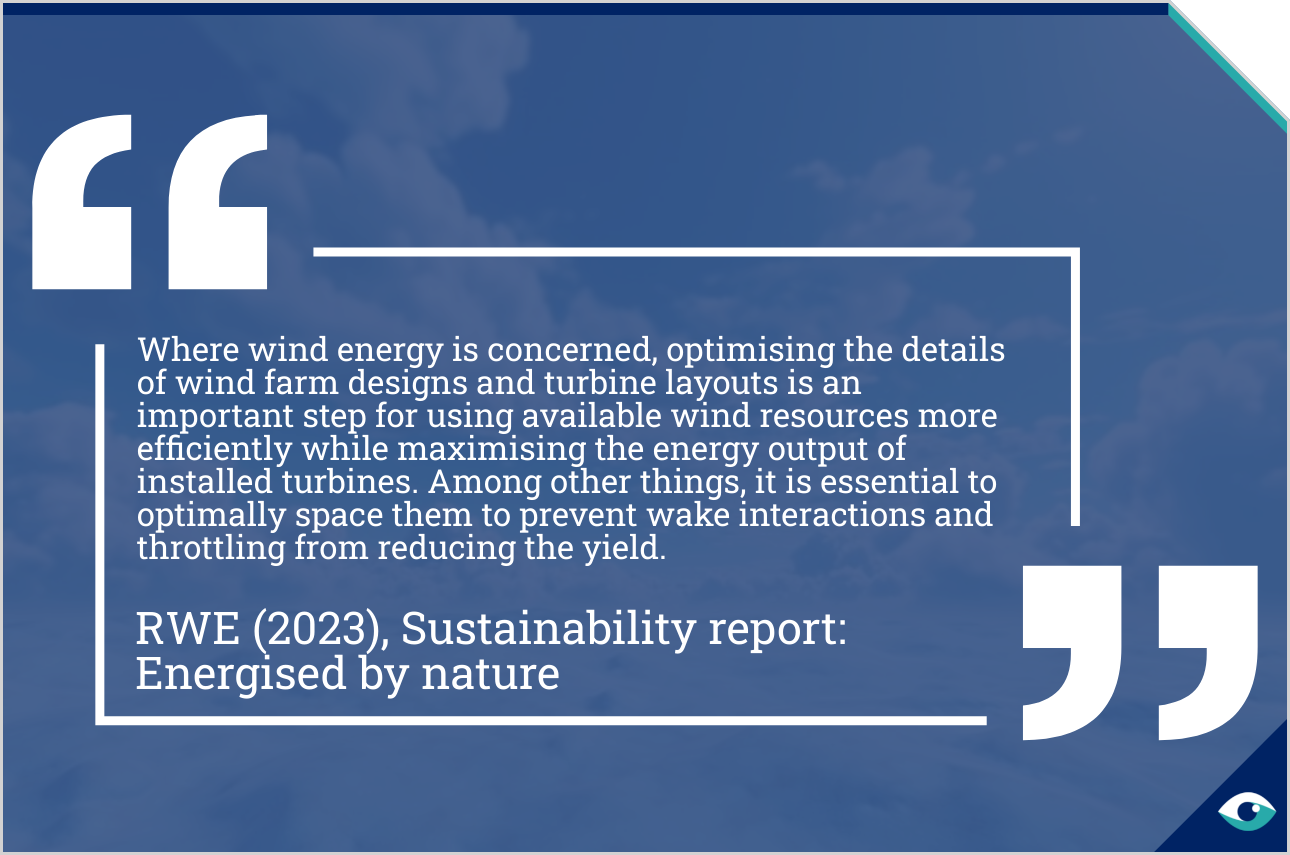Wind farms are increasingly impacted by wake effects that reduce wind speed and increase turbulence, lowering energy production and intensifying mechanical stress on downwind turbines. Intra-farm wake effects can decrease energy output by 10–20%, causing “wind theft” affecting both output and operational costs in high-density installations. Optimising wind farm designs and turbine layouts to mitigate these effects is crucial for efficiency, especially offshore. Legal disputes between states and entities must be managed where they occur, and the use of the most up to date remote sensing techniques must be deployed to understand wake effects.

Reducing wake losses to maximise wind farm efficiency
Innovative upstream strategies and relationship management to curb wake-induced energy losses
Value chain: upstream
Renewables
AT A GLANCE
Wake effects in wind farms reduce energy production by 10–20%, impacting profitability and requiring optimised turbine layouts and supplier coordination.
Minimising wake losses is essential as high-density offshore installations face space and efficiency issues, affecting states and operators.
New technologies and standards are critical to mitigating inter-farm wake impacts.

Advances in wind resources
Advances in remote sensing and computing have significantly improved the characterisation of wind resources, enabling wind farm operators to select optimal sites and layouts for maximising energy output. Additionally, tailored turbine designs offered by original equipment manufacturers (OEMs) cater to various site characteristics, reducing turbulence and wake losses.
Balancing turbine spacing cost
Spacing turbines further apart to reduce wake effects also presents a financial challenge by increasing cable and infrastructure costs. Striking a balance between mitigating wake losses and managing production costs is essential. In practice, many wind developers still rely on uniform grid layouts due to land constraints and zoning, often prioritising aesthetics over power optimisation. This design approach limits the efficiency gains achievable by maximising spacing for wake recovery, reflecting the need for optimised layout models to enhance power output.

Inter-farm wake impacts
Research on wake effects continues to highlight their disruptive influence on adjacent wind farms, with some wakes extending up to 55 km under specific atmospheric conditions. These extensive wakes have the potential to interfere with nearby offshore wind farms, risking both operational efficiency and profitability. Consequently, developers must anticipate and manage inter-farm wake impacts, which could lead to conflicts between operators or even between states. The management of these wakes is crucial for maintaining harmonious offshore wind farm operations in high-density zones.
Technologies for wake control
Researchers and developers are exploring new technologies and optimisation methods. For example, satellite SAR and long-range lidar, offer unprecedented precision in mapping wake behaviour over long distances. Studies supported by the US Department of Energy aim to create comprehensive datasets on wake impacts. These innovations can help in overcoming wake-related challenges and maximising the operational potential of offshore wind farms.
FURTHER READING
- Academic study on wind wake effects (Nature)
- Basic guide to wind wakes (Medium)
- Wake effects (IRENA - 2023)
